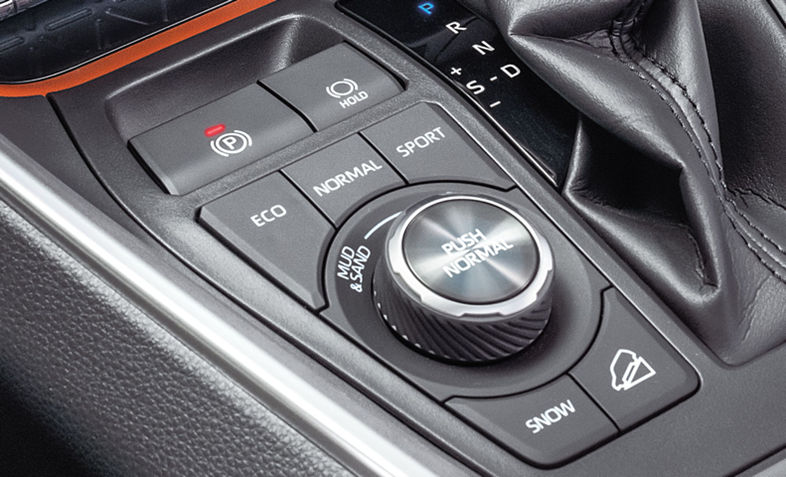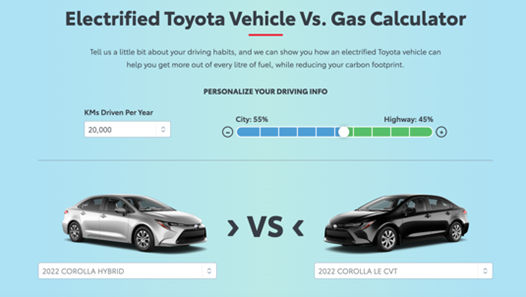Select a province & language
Entrance to this website assumes you have read and agree to these Legal Terms and Conditions and the Privacy Policy.
Entrance to this website assumes you have read and agree to these Legal Terms and Conditions and the Privacy Policy.
Whether heading out on grand adventures or simply running errands, drivers across the country have had to consider the high price of gas when getting behind the wheel. According to a survey by KPMG, the price hikes are so significant that 61% of Canadians are prepared to make the switch to an electrified vehicle.
Though fuel prices seem to be fluctuating, it looks like experts believe that the higher prices aren’t going anywhere anytime soon. So, what does this sudden price surge mean for concerned drivers? From small changes on the road to keeping up with your regular service intervals, there are a variety of things you can do to improve your vehicle’s fuel economy. We’ve compiled our top 5 tips to help ensure you get the most out of every mile.
There are many small ways we can alter our driving habits to help fuel savings add up over time:

Most drivers have heard of ECO Mode, but do you know what pushing that button really does? Using ECO Mode prioritizes fuel efficiency by adjusting your throttle for a smoother and response. Paired with gentle accelerating and braking will keep your car running in ECO Mode for longer.
All vehicles, electrified included, must be serviced regularly to maintain optimal performance – this will help improve your fuel efficiency in the long-run, since your vehicle will be operating in peak condition. Experts recommend having your vehicle serviced every 6 months or 8,000 km, whichever comes first. During a maintenance appointment, Toyota University Trained Technicians check the following:
Older or worn braking components can increase drag, impacting the overall fuel efficiency of your vehicle. If you require new brake components, Toyota Genuine Parts were made to fit Toyota vehicles perfectly for optimal performance and fuel economy.
Driving on the correct tires for the season is essential to fuel savings, as it keeps drag at bay by providing the proper level of friction on the road ahead. Our Toyota University Trained Technicians can help you make the switch to the right tires for your vehicle and the weather.
Your tire pressure will be adjusted for you based on your vehicle needs, helping to reduce drag and increase fuel efficiency.
Proper wheel alignment delivers the appropriate amount of friction while driving, ensuring your vehicle is operating as efficiently as possible.
Having your motor oil changed before its recommended change time will keep your vehicle from working harder on old oil, which could burn more gas than necessary.
Toyota University Trained Technicians can assist you with your vehicle maintenance, but in between your regular service appointments, there are some steps you can take at home to help improve your fuel efficiency.
Here’s how to check your tire pressure every month:
When old fuel remains in your vehicle, it can cause blockages which impact overall efficiency. The Toyota Genuine Complete Fuel System Cleaner clears fuel build-up inside your vehicle, improving drivability and fuel economy. You can perform the cleaning yourself or book an appointment with a Toyota University Trained Technician for assistance.
Before setting out, ensure you’re only carrying items you need – that goes for bike and roof racks as well. Extra weight can impact fuel economy.
Did you know that premium fuel isn’t required for most vehicles? While the word “premium” suggests it’s better than regular fuel, a more appropriate term would be hi-octane, which simply refers to how the gas burns. Check your Owner’s Manual to find out what fuel type your vehicle functions with best – chances are, you’ll be fine using regular which can save you a pretty penny at the pump.
More drivers than ever have made the switch to electrified vehicles. Toyota has been leading the charge for over 20 years so that today, you can choose from an array of electrified vehicles and powertrains, to find the right fit for your lifestyle and driving needs. Our hybrid electric vehicles don’t even need to be plugged in – they seamlessly combine the power of a gas engine with electric motors and recharge as you drive.

Tell us a bit about your driving habits and find out how much you can save by making the switch.
We hope these tips help you navigate the rising gas prices so you can keep taking on the road ahead with confidence and peace of mind. Remember, a few quick adjustments can help your fuel go even further, easing some strain on your bank account and the environment.